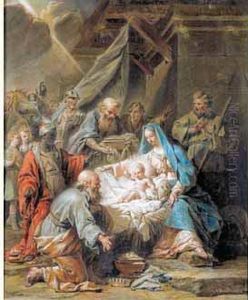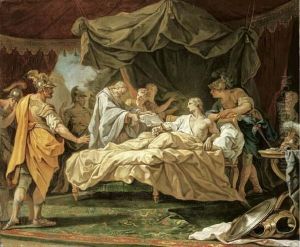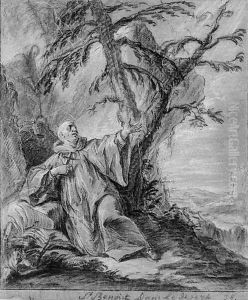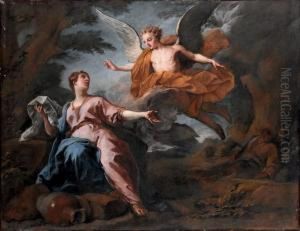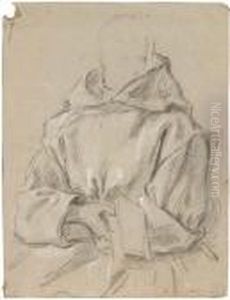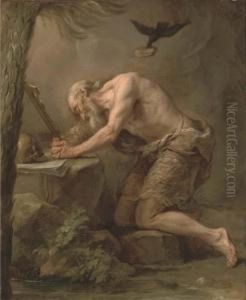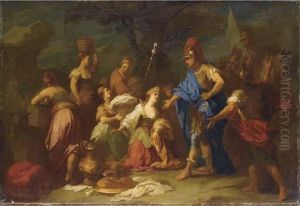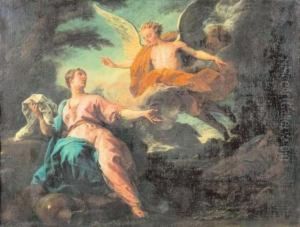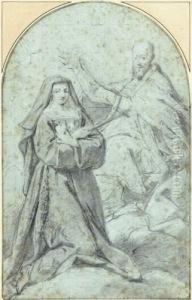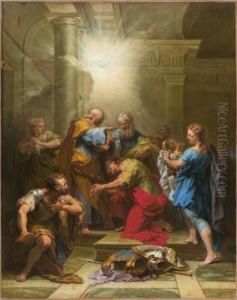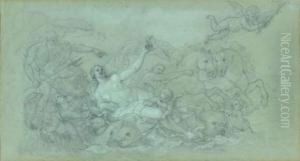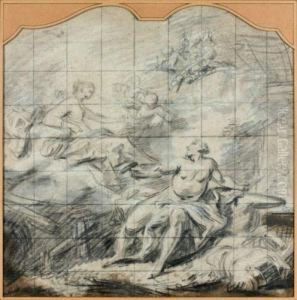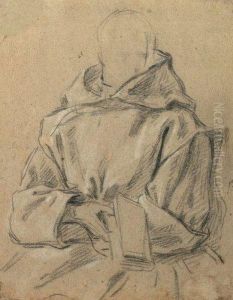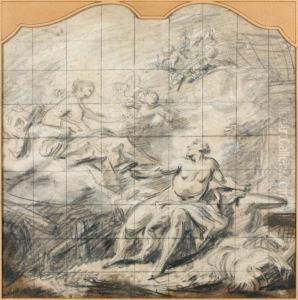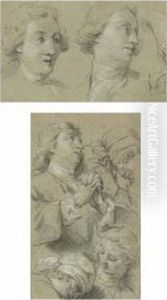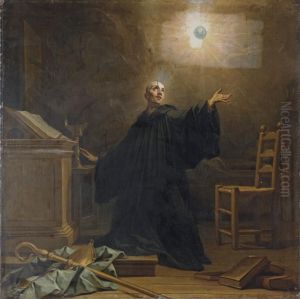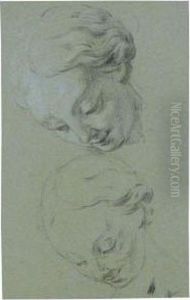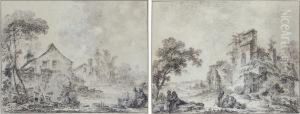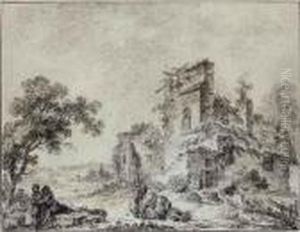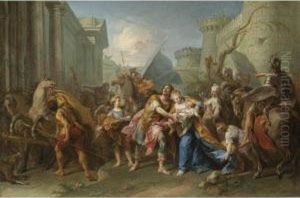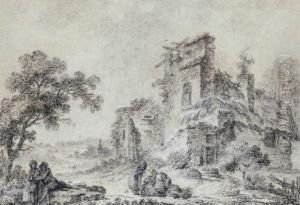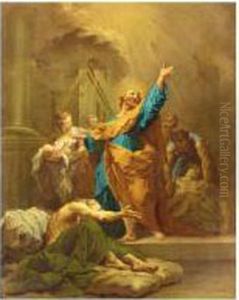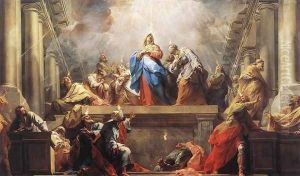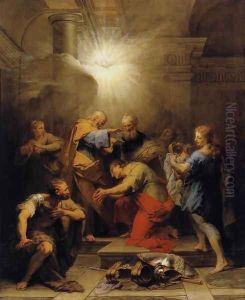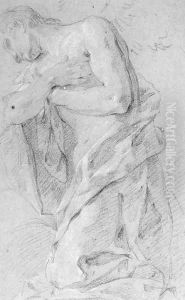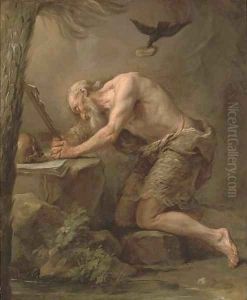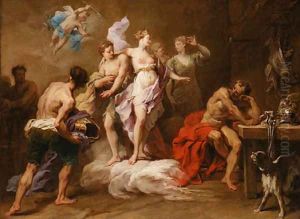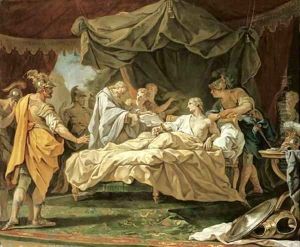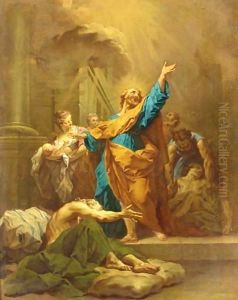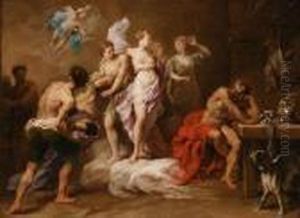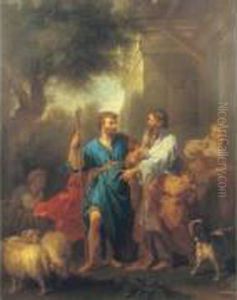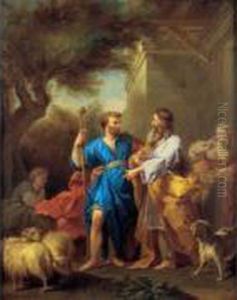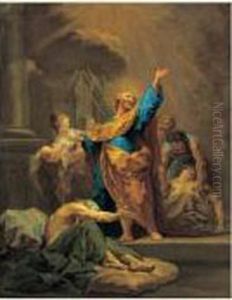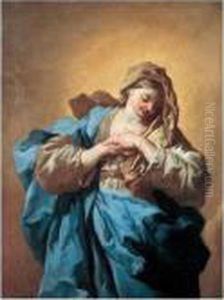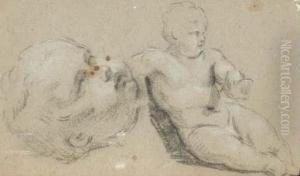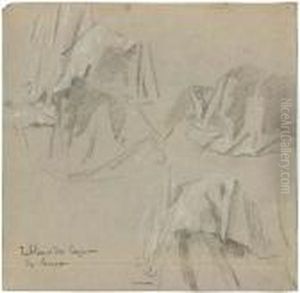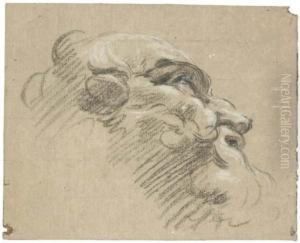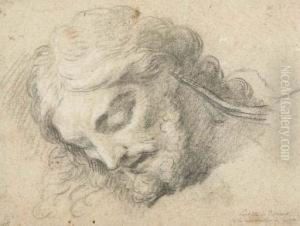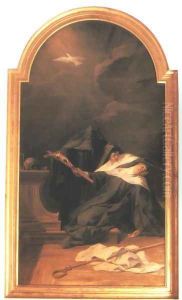Jean II Restout Paintings
Jean II Restout, a prominent French painter, was born on March 4, 1692, in Rouen, France, into an artistic family. His father, Jean I Restout, was also a painter, which provided young Jean II with an environment steeped in artistic tradition and practice from an early age. Trained by his father and later by his uncle, Jean Jouvenet, Restout quickly developed his own style within the parameters of French Baroque and Rococo traditions.
His early works were recognized for their dramatic use of light and shadow, a technique influenced by the Baroque style. Restout moved to Paris to further his career and became a member of the Académie Royale de Peinture et de Sculpture in 1717. He received prestigious commissions, including works for the Notre-Dame Cathedral and the Palace of Versailles, which solidified his reputation as a skilled painter of religious and historical scenes.
In 1734, Restout was appointed professor at the Royal Academy, a position that allowed him to influence a generation of French artists. His style began to evolve during this period, showing a greater concern for clarity and order, which reflected the changing tastes of the time as the Rococo style gave way to Neoclassicism.
Jean II Restout's notable works include grand-scale religious compositions, such as 'Pentecost' (1732), displayed at the Louvre Museum. His legacy is tied to the French Academy and his influence on the development of Neoclassical painting.
After a prolific career, Restout died on January 1, 1768, in Paris. His extensive body of work and his role in the transition from Baroque to Neoclassical art have left a lasting mark on the history of French painting.
